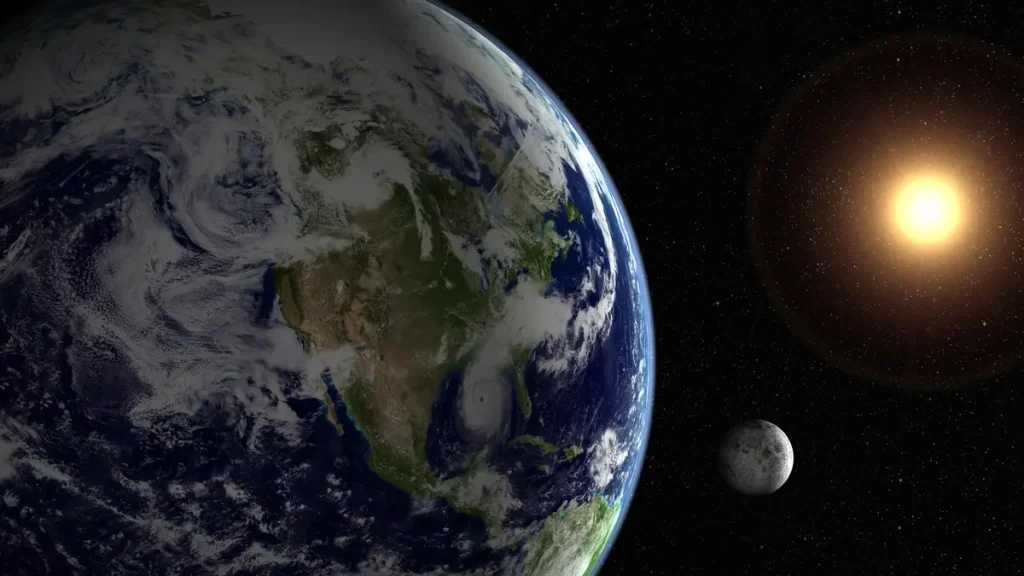Scientists have confirmed July 9, 2025, was the shortest day in Earth’s recorded history, with the planet completing a full rotation 1.3–1.6 milliseconds faster than the standard 24-hour period. Though imperceptible to humans, this phenomenon has notable implications for precision technology and timekeeping systems.
Earth’s Rotation Speed Spikes
According to the International Earth Rotation and Reference Systems Service (IERS), July 9, 2025, saw Earth’s rotation clock in at approximately 86,398.4 seconds—making it one of the shortest days ever logged, slightly eclipsing even July 5, 2024’s record of 1.66 milliseconds under 24 hours. This unusual speed-up is part of a summer trend; scientists also anticipate record-short days on July 22 and August 5, each shaving off around 1.3–1.5 milliseconds.
Why Did This Happen?
Experts point to the Moon’s current orbital geometry as a key factor. With the Moon near its maximum distance from Earth’s equator and exerting a subtler tidal brake, Earth’s spin has slightly accelerated. Other contributing factors include minor shifts in Earth’s mass distribution—such as atmospheric patterns, ocean currents, post-glacial rebound, and groundwater changes—which affect angular momentum and rotation rate.
While the Moon’s position plays a key role, other factors include:
-
Internal Earth dynamics: shifts in Earth’s molten core, mantle, or oceanic circulation .
-
Climate-driven mass movements: glacial melt redistributes water, tightening Earth’s spin via angular momentum.
-
Seismic and geophysical shifts: large earthquakes can nudge today’s rotation slightly but remain minor compared to lunar effects.
Despite these influences, scientists caution that summer 2025’s accelerated rotation trend still defies comprehensive explanation
What Is a “Shortest Day” Anyway?
A standard solar day is 86,400 seconds. Fluctuations in Earth’s spin speed can shorten or lengthen this by milliseconds. These tiny swings are tracked using atomic clocks and satellite laser ranging, essential for global time coordination.
Will We Feel It?
No. A 1.5-millisecond difference is imperceptible (human blink ≈100 ms), and yet it’s critical to machines. It poses no danger but does mandate vigilance for atomic timekeeping and tech infrastructure.
Notable Records
| Date | Shortened by (ms) | Notes |
|---|---|---|
| June 29, 2022 | −1.59 | Longest acceleration before modern trend |
| July 5, 2024 | −1.66 | Previous shortest day on record |
| July 9, 2025 | −1.3 to −1.6 | Current record: fastest rotation ever |
| July 22, 2025 | ~−1.38 | Second notably short day of summer 2025 |
| August 5, 2025 | ~−1.5 | Third record-short day of summer 2025 |
Earth’s rotation has gradually slowed over millennia—from about 23 hours in the Triassic Period to 24 hours today—due to tidal drag from the Moon. Yet over the past five years, we’ve seen unexpected speed-ups, with 28 out of the 30 shortest days on record occurring since 2020.
The current spike is puzzling researchers. Surprisingly, Earth’s longest-ever day of 25 hours may still lie hundreds of millions of years ahead, but these microvariations reveal much about planetary physics today
Should We Care About a Millisecond?
Although imperceptible to everyday life, this represents a scientific signal rather than a public concern. Experts affirm it won’t cause disruptions for most people.
However—and this is key—satellites, medical monitors, stock exchanges, and power grids rely on hyper-accurate atomic timing. Even a millisecond discrepancy can cascade into system-wide errors.
Researchers expect more anomalously short days this summer. Monitoring will help calibrate global clocks and determine if and when a negative leap second is warranted. Long-term trends remain unclear: the eventual outcome may involve more frequent adjustments and deeper investigations of Earth’s core, mantle, and atmospheric dynamics.
July 9 was a historic moment—Earth’s fastest spin day on record. While invisible to us, this minute change highlights our planet’s dynamic complexity and reminds us that even tiny shifts can disrupt the precision backbone of our modern world. As scientists continue to track Earth rotation speed and plan for potential leap-second corrections, July’s micro-sprint remains a striking reminder of time’s fragile balance.


